Europe always get the best of the high performance cars and that is especially true of Audi’s RS models. While we do get the RS7 and Plus performance we miss out on the Rs3 and RS4. Now some good news, we are getting the new Audi RS7 and RS6 performance versions.
The standard RS7, if we can call it that, has a twin turbo eight-cylinder motor that dishes up a very respectable 560 hp and 516 lb ft torque through a delightful eight-speed Tiptronic automatic transmission. In the transition from regular RS car to the full fat Performance version the RS6 and RS7’s twin-turbo V8 has gained an extra 37 hp to 595 hp and 36 lb ft of extra torque on over-boost, enough to send it from 0-62 mph in just 3.7 seconds. Expect it to be faster when we drive it.
This acceleration is 0.2 seconds faster than the regular RS models they’re based on, it’s faster than several supercars.
The acceleration doesn’t stop at 60 mph. Audi claims RS Performance cars can reach 124 mph in just 12.1 seconds, an improvement of 1.4 seconds over the regular car. Top speed is 174 mph for the RS6 and 189 mph for the sleeker RS7.
Fuel consumption remains unchanged at 24.5 and 24.8 US mpg, respectively
Engine
The new RS performance models are equipped with the most powerful version of the free-revving V8 biturbo power unit with a displacement of 3,993 cc. Power output has been increased by 37 hp (597 hp), which is available between 6,100 and 6,800 rpm. The maximum rpm has thus also been increased by 200 revs. A constant 516.3 lb-ft of torque is available between 1,750 and 6,000 rpm. On top of this the engine has an over-boost function allowing the driver to temporarily draw on up to 553.2 lb-ft between 2,500 and 5,500 rpm. Overboost is activated automatically under full load if the engine/transmission setting is set to “dynamic” mode. The boost pressure indicator in the RS menu turns red when over-boost is active.
Audi uses a cylinder on demand (COD) system in these cars so at low to moderate load and engine speed, this deactivates cylinders two, three, five and eight by closing their valves and shutting off fuel injection. The high-performance power unit then runs as a four-cylinder engine until the driver presses firmly down on the gas pedal again. The only thing the driver notices is significantly reduced fuel consumption.
Drivetrain
The standard eight-speed tiptronic has been designed for maximum sportiness in both the new RS 6 Avant performance and the new RS 7 Sportback performance. All gear changes are super fast and flexible. The driver can choose between the modes D and S or change gears manually either by tapping the selector lever or by using the shift paddles on the RS multifunction sport leather steering wheel. In manual mode, a shift indicator in the driver information system (DIS) or optional head-up display indicates the rev limit. While the lower gears of the tiptronic are closely spaced for sporty response, eighth gear is tall to reduce fuel consumption.
Quattro permanent all-wheel drive delivers the power to the road and distributes torque as needed via the center differential. In the standard configuration, 40 percent flows to the front axle and 60 percent to the rear axle. The wheel-selective torque control intervenes as necessary. On request, Audi will combine quattro all-wheel drive with the optional sport differential on the rear axle: It uses two superposition gears to steplessly vary the distribution of the power at the rear axle between the wheels. In fast curves, it literally pushes the RS performance models into the radius.
The new RS performance models come standard with 21-inch cast aluminum wheels. The RS 6 Avant performance gets wheels in an exclusive 5-V-spoke star design in matt titanium look with a gloss turned finish. Wheels with a 5-double-arm design are reserved exclusively for the RS 7 Sportback performance. These are also in matt titanium look with a gloss turned finish. Both wheels are optionally available in silver or gloss anthracite black, gloss turned finish.
The four internally ventilated brake rotors have a weight-saving wave design, shaving nearly three 6.6 lb compared with a brake system with conventional rotors. The front rotors measure 15.4 in in diameter and are gripped by six-piston calipers.
Audi also offers optional carbon fiber-ceramic brake discs, which all together reduce weight by an additional 22 lb. Electronic Stabilization Control (ESC) has a Sport mode that can be deactivated altogether if need be.
Interior and equipment
The RS 6 Avant (no wagon for us Stateside) performance and RS 7 Sportback performance come standard with RS sport seats with pronounced side bolsters and integrated head restraints. Audi offers the seats in the color combination black and blue with the optional RS performance design package. This includes new seat upholstery in an Alcantara/leather combination with a honeycomb pattern and matching contrasting stitching on the armrests, control elements and floor mats. Rounding out this interior combination are knee pads in Alcantara and Carbon twill blue inlays. This sophisticated and exclusive carbon material is interwoven with a blue thread.
Both RS performance models feature a generous list of standard equipment, which includes four-zone automatic air conditioning, MMI navigation plus with touchpad control (MMI touch) and the Audi sound system. Optional high-end features range from a head-up display and the Bang & Olufsen Advanced Sound System to the driver assistance systems, including adaptive cruise control with Stop&Go function and the night vision assistant. Audi connect brings tailored online services on board. Passengers can surf the web freely via a Wi-Fi hotspot.
The new Audi RS 6 Avant performance costs 117,000 euros ($128,000) in Germany; the new Audi RS 7 Sportback performance 134,082 euros. No word on availability here yet.

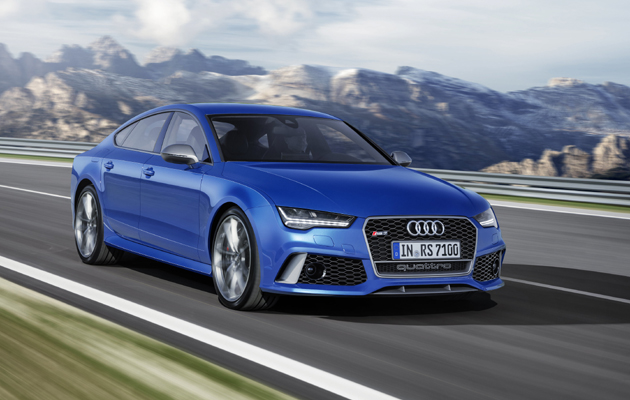
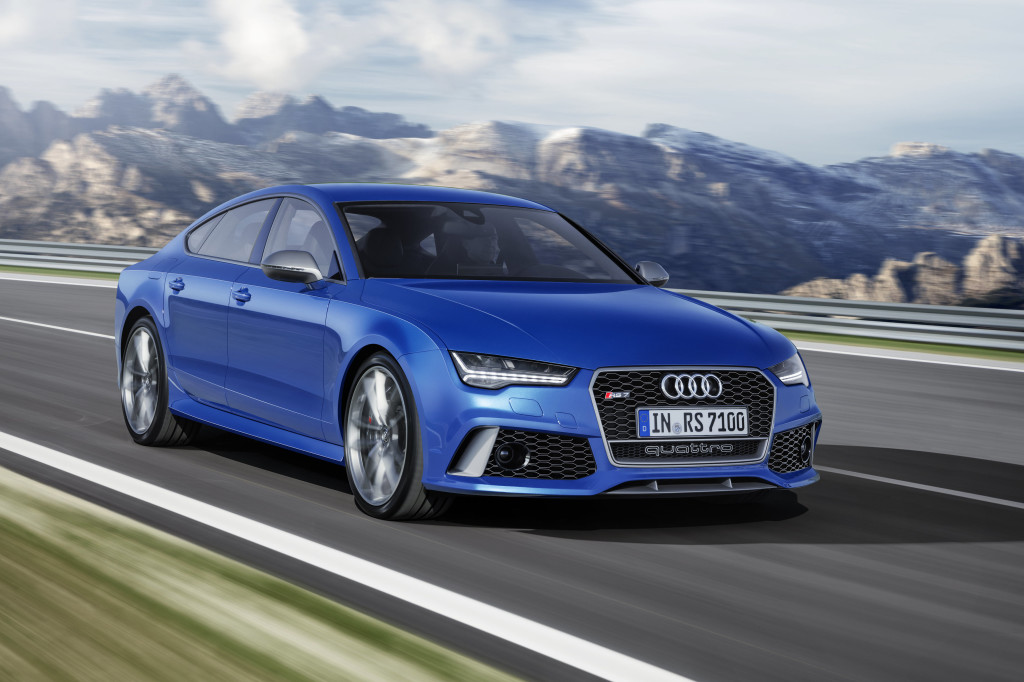
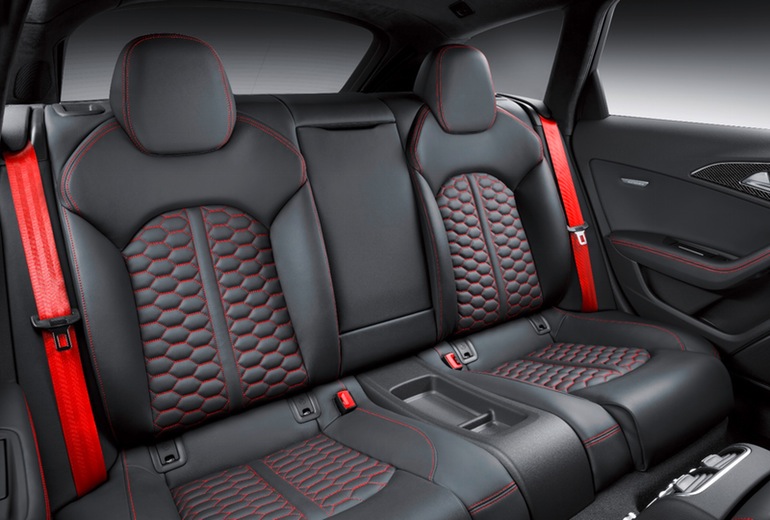
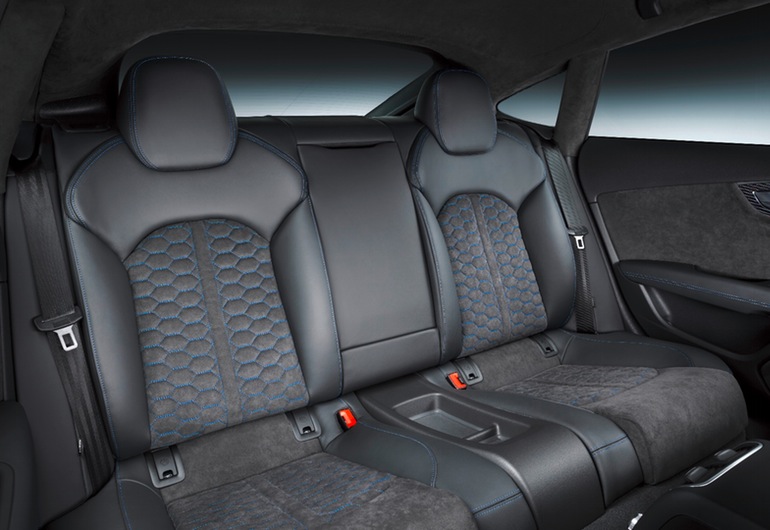
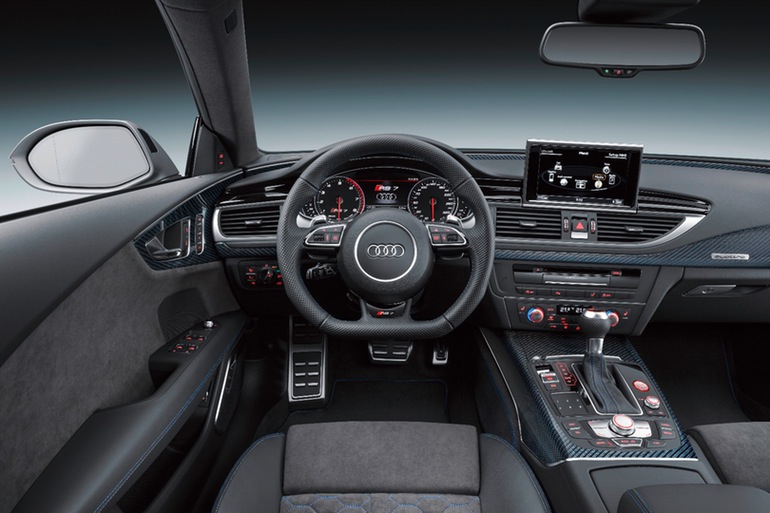
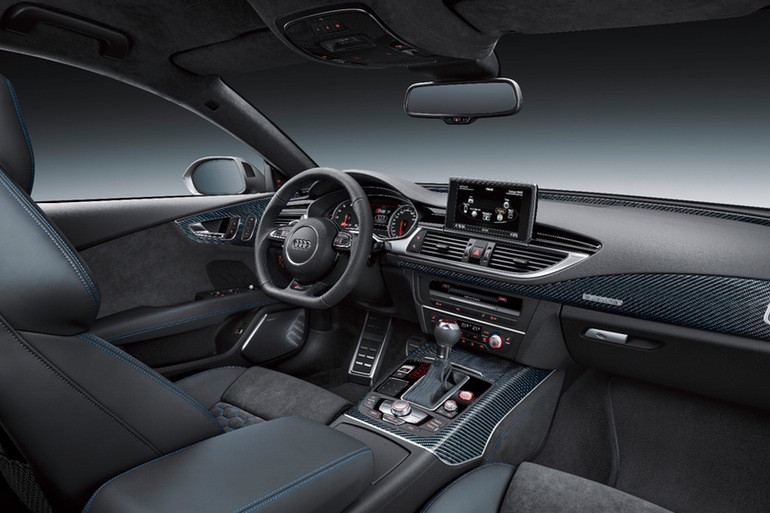
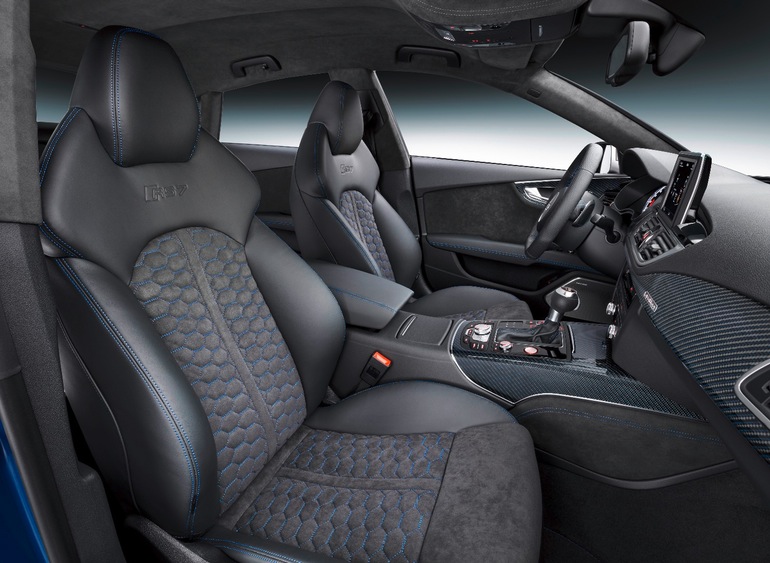

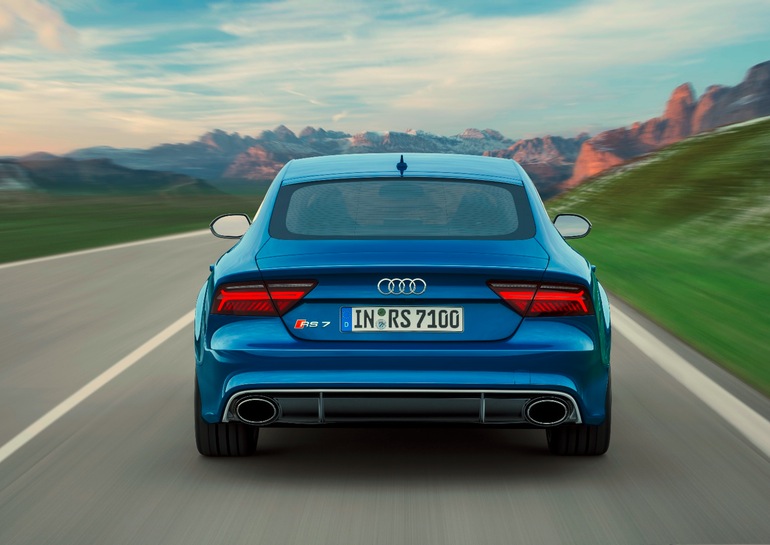
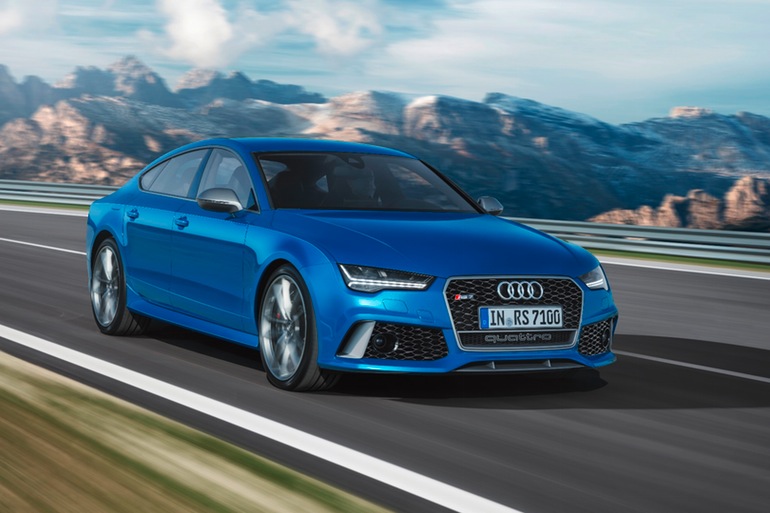
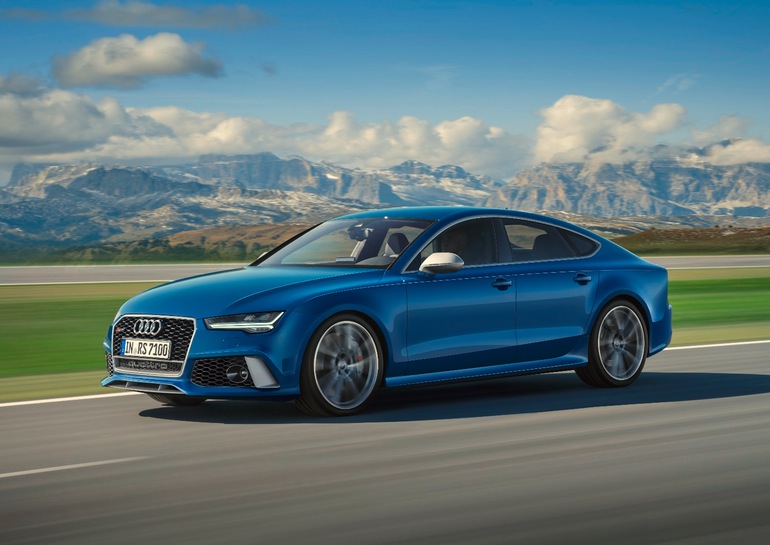
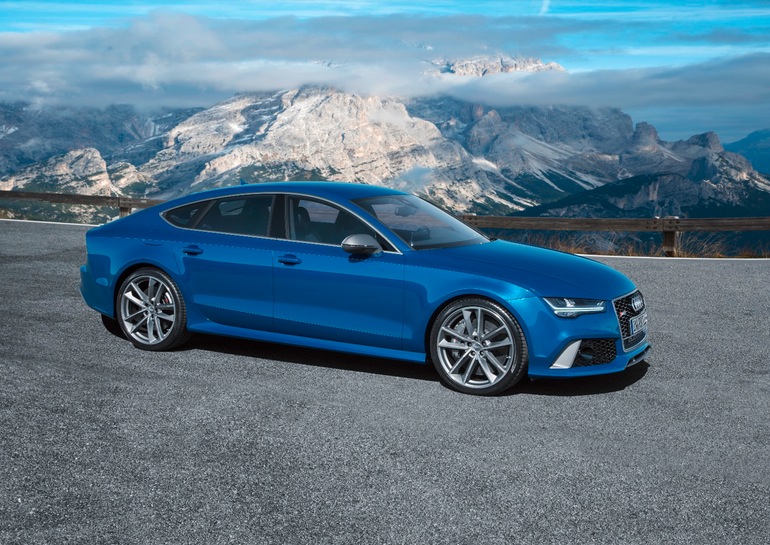
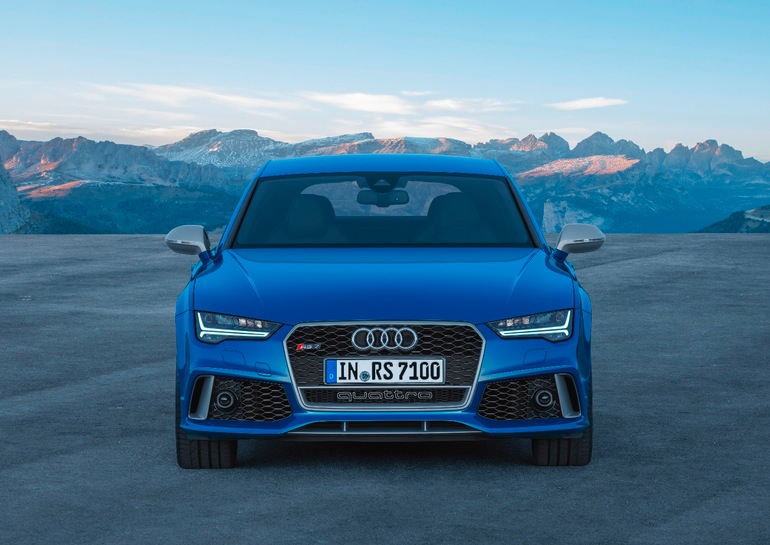
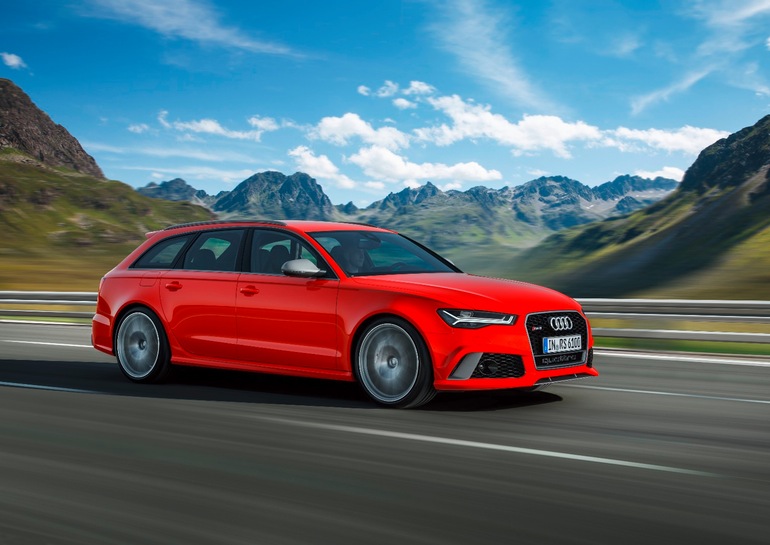
Social Media